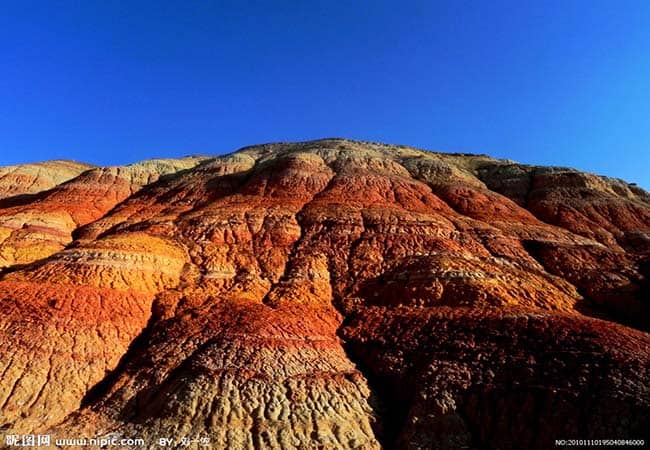Top 17 Travel Experiences in Xinjiang
Explore Xinjiang’s vast Taklimakan Desert. Drive on the deserted Duku Highway, surrounded by gobi desert and snow-capped mountains. Visit historic ancient city ruins of the Silk Road, such as Jiaohe and Gaochang. Admire the millennium-old poplar trees, and the majestic Muztagh Mountains from afar. In Xinjiang, you can experience thousands of years of Chinese history and discover the ultimate beauty of wild nature. Here we list the top 17 travel experiences you should not miss.
1.South Xinjiang Bazar
“Bazar” (巴扎) is a word that will raise your lips when you read. Bazar not only has a dazzling array of goods and gorgeously dressed locals, but also is a good place to concentrate on disappearing businesses, ancient laws of value and laws of integrity. There are bazars everywhere in Kashgar old town, all kinds of arts and works are gathered here; the grand bazaar of Hotan Aitika on Sunday is even more surprising.
If you think the jade bazaar in Hotan is too “touristy”, then go to the cattle and sheep bazaar in Huangdi Township to open your eyes. The bazaar in the old city of Yutian is not big. The locals wearing “Talibaik” are the biggest attraction. Don’t forget to Xianbai Bazaar town on Saturday to enjoy delicious food.
√Recommended Xinjiang tours:
- 10 Days Classic Southern Xinjiang Historic Tour
- 14 Days Best Xinjiang Silk Road Tour of Ethnic Experience
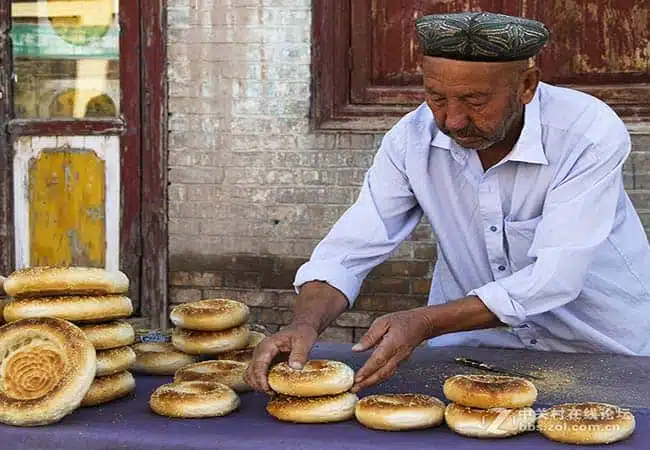
2. Kanas in Winter
If you can overcome the severe cold and get close to Kanas once in the winter when the snow is up to your waist, you will believe that the vulgar label of “Pure Land on Earth·Oriental Small Switzerland” is true. God temporarily takes back the palette in this season. Wrapped in silver, the Qiongzhi rime is gleaming, and it shows a faint blue under the sunlight. The color-changing lake is only white at this time, and the pebbles on the beach are covered with snow, as lovely as marshmallows. In addition to watching this freehand landscape painting, you can also experience horse-drawn sledges, skiing, and archery. Kanas in winter is quiet and not monotonous, and highly-recommended for a Northern Xinjiang tour.
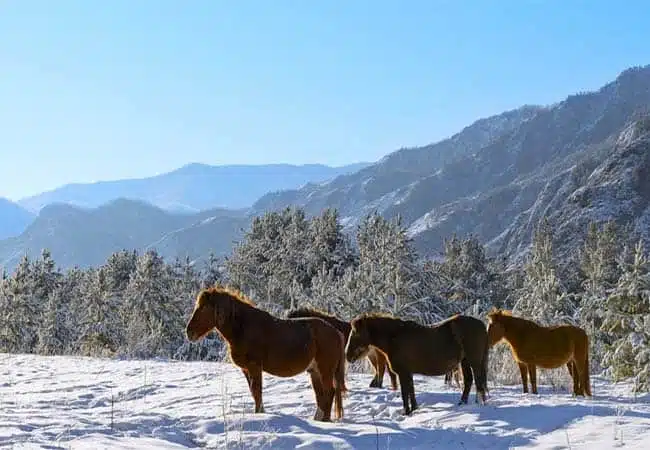
3. Crossing the Tianshan Mountains
Crossing the 6,000-meter-high Tianshan barrier has been an achievement that brave adventurers can only achieve for thousands of years. Today, from the East Tianshan to the West Tianshan, the ancient roads that have been silent for a thousand years under the glaciers are increasingly being excavated, becoming a paradise route that outdoor enthusiasts love and fear.
Whether it’s Bogda Peak near Urumqi, or from the Ili River Valley along the Wusun Ancient Road across the Tianshan Mountains to the oasis of the Taklimakan Desert, you will always remember hikers on the magnificent Tianshan Snow Line Xiata Ancient Road in the four-kilometer Daban when wind blowing fiercely on the gorgeous alpine grasslands and forests.
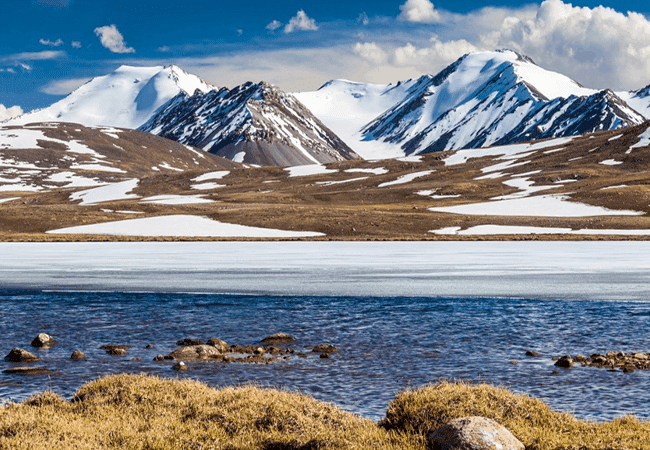
4. Appreciate flowers in Ili
In April, when snow and ice were still covered this city, the apricot blossoms in the Ili River Valley were already blooming in the cold mountain valleys, thus ushering in the half-year-long flowering season. In the spring of May, Tianshan safflower started the peak season of Tianshan wild flowers, and it continued until early summer at the end of June, when it was the most spectacular season of lavender in the valley.
But don’t think that Ili is just China’s Provence. After July, under the snow line of the Tianshan Mountains, the endless rapeseed flowers, perilla and various wild flowers in the Turks Valley are all blooming with all their strength. In the vineyards and watermelon fields all over the valley, the dazzling sunflower always keeps your eyes on.
√Recommended tour: 7 Days Xinjiang Apricot Blossoms Tour
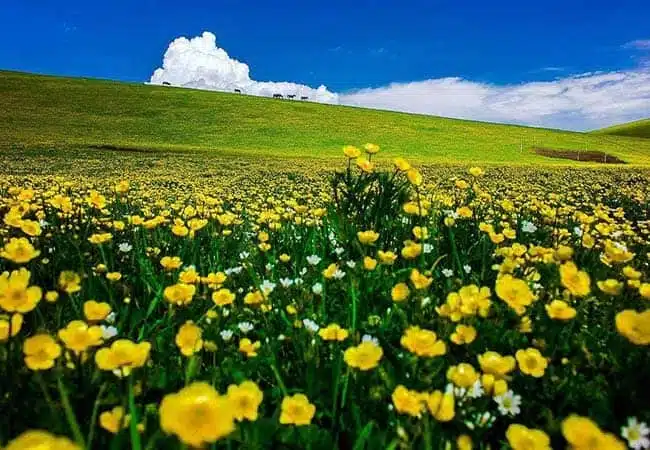
5. Kashgar Old Town
“If you have not been to Kashgar, you will not be counted as having been to Xinjiang.” No one can deny Kashgar’s unique western style. As a major trading town on the ancient Silk Road, the old city retains the only maze-like block with Islamic characteristics in China and a must-visit place on a South Xinjiang Tour. The alleys still use the old Uyghur names. All kinds of bazars are the most authentic microcosms of the Uyghur people’s lives.
On the streets of the city, the air is always filled with the aroma of naan and barbecue. The faces of the Western Regions make people wonder where they are. Whenever the mosque’s bell rings, the Muslims who come on time from all directions will become Another interpretation of Kashgar style.

6. Desert Highway
It is about 1,000 kilometers long from east to west and 400 kilometers wide from north to south. This is the vast Taklimakan. Asphalt highways have woven a “皿”-shaped road network on the vast desert. Sand dunes, Populus euphratica, sunsets along the way will satisfy all your imagination of driving in the desert.
The “two verticals in the middle” (Hetian-Alar, Minfeng Yiluntai) in the hinterland has become a popular self-driving route for travelers. The former puts the Revak Buddhist Temple and the Mazhatage Mountain in a string, while the latter shows the amazing achievements of oil development. In addition, don’t ignore the G218 national highway on the eastern edge of the desert. The Tarim River landscape and the legend of Lop Nur have gradually made it popular here.
√Related reading: 6 Most Famous Deserts in China
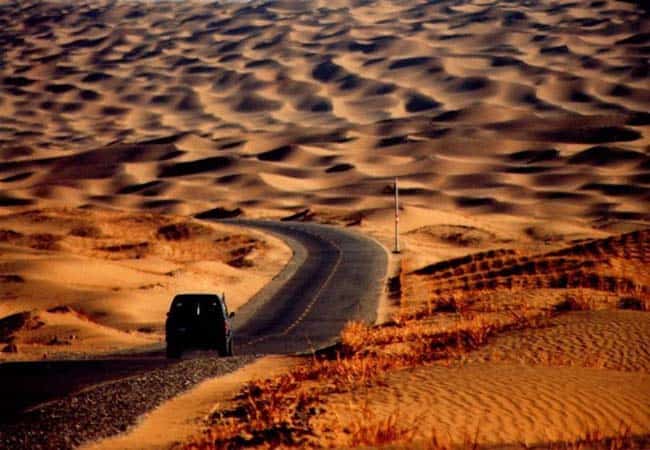
7. Stroll in the Silk Road Old City
In the Turpan Basin, at the foot of Huoyan Mountain, the ancient city of Jiaohe and the ancient city of Gaochang have witnessed the thousand-year glory of the Silk Road. They were once “super” cities on the ancient Silk Road, with streets extending in all directions, row upon row of houses, majestic palaces and Buddhist temples, although only ruined walls are left as time passed, they have left precious history.
You can stroll through the labyrinthine ruins in the moonlight, listen to the past in the music of folk artists, or try to bring your thoughts back to the prosperous Tang Dynasty and imagine the majesty of the Buddha’s singing in Gaochang City in front of the pagoda.
√Recommended China Silk Road tours:
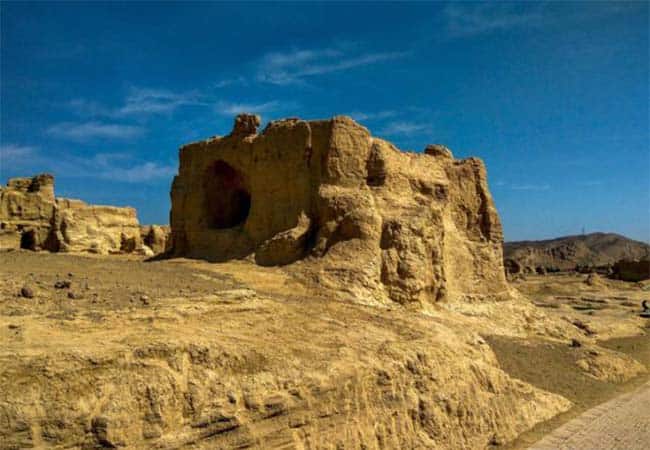
8. Grottoes Art
Buddhism is spread east along the Silk Road, leaving the most complete and primitive Buddhist stone corridors in the Western Regions. The upper and lower seat of the Buddha statue in the Tuyugou Ganfo Cave in Shanshan is the Hu bed. The inscription is in Chinese and has gone through from Jin to Tang. In the long period of time, the artistic blending of Gaochang culture is revealed here.
In Kuqa and Baicheng, which are concentrated in the Qiuci Grottoes, such as Kizil Thousand Buddha Caves, Kum Tula Grottoes, Senmusem Grottoes and Kizil Gaha Grottoes, you will be able to see the original Gandhara, the style of Motuluo statues, and the art of Qiuci created by combining them with the traditions of the Central Plains and Han, known as “the pinnacle of Central Asian art”.
√Recommended tour: 12 Days Urumqi-Turpan-Korla-Kuqa-Hotan-Kashgar Silk Road Adventure

9. The Grasslands on the Tianshan Mountain
The majestic Tianshan Mountains not only created endless glaciers and forests, but also created a graceful three-dimensional grassland with high mountains, refreshing your stereotyped understanding of the “endless” grassland. Riding on these mountain-shaped grasslands with undulating depths that exceed a drop of more than a kilometer, you can easily get lost by cliffs or under high slopes, but it doesn’t matter, remember to visit those brave Kazakhs, who will take you to the sea of flowers under the glacier in June.
Whether it is a yurt in the lower part of the grassland or a wooden house close to the forest, there is always a warm meal of naan, milk tea and horse meat, and the starry sky waiting for you.
√Recommended tour: 8 Days Best Western Xinjiang Hiking Tour
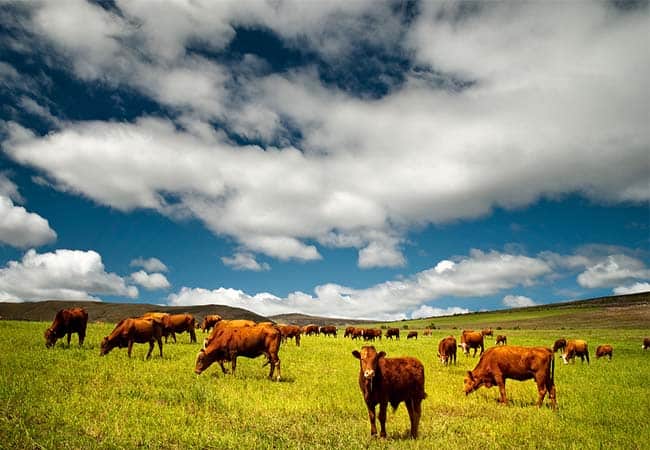
10. Kazakh herders transition
When there was a traffic jam in northern Xinjiang in autumn, in all likelihood, you might bump into the army of the transition. The dust and smoke outside the window of the car, the herdsman riding on the horse, holding a long whip to drive, the camel carrying all the belongings, every step taken by the big hoof is heavy, the cattle and sheep are the most greedy, and they eat all the way, leaving a pile of fertilizer on the highway. This mighty scene is tantamount to a million heroes crossing the river.
If you are in a hurry and press the horn, the timid sheep will rush from the left to the right in shock. All you can do is stop, give way, and wait for them to leave away. Don’t forget to pick up your camera and record this migration pastoral for the Kazakhs.
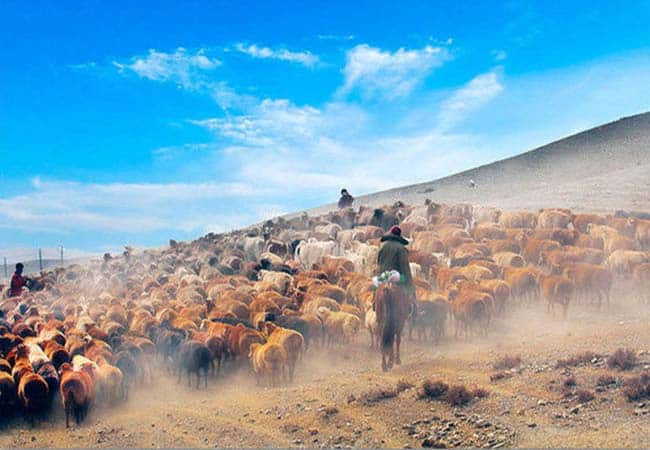
11. Duku Highway
It took more than nine years for the engineers of the People’s Liberation Army to repair this natural danger, and more than a hundred people gave their lives for it. Now you only have 4 months in a year to set foot on this monument in the history of highway construction, but you can experience spring, summer, autumn and winter in one day, and see the most exciting landscapes in Xinjiang.
From the easternmost end of the Ili Basin, across the rugged Tianshan Mountains, to the vast grasslands of Bayinbuluk, across the snow-covered Daban, and finally usher in the red mountains and rivers and majestic gorges of southern Xinjiang. Crossing snow-capped mountains, glaciers, grasslands, and river valleys, you will feel how human engineering is seamlessly integrated with nature, and how hardships and beautiful scenery are interpreted to the extreme.
√Recommended tour: 13 Days Best Xinjiang Landscape Tour
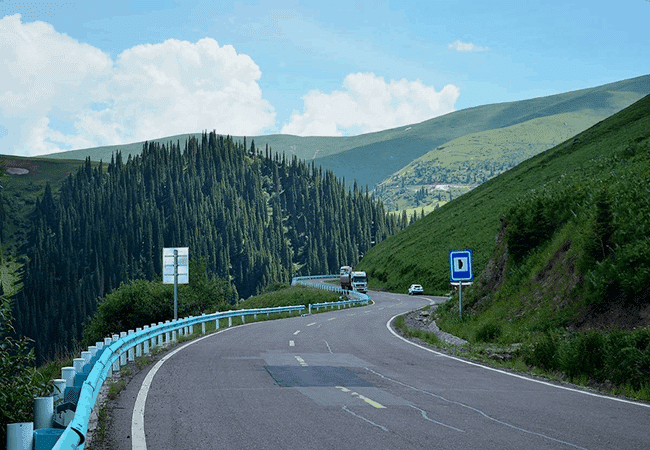
12. A Bite of Xinjiang Cuisine with Top Food
Xinjiang is definitely a paradise for meat lovers. All your vows to lose weight will be forgotten. Grilled lamb skewers, grilled fish, lamb head, and spicy lamb hooves can be seen everywhere. The light-flavored ones will definitely fall in love with the Hui nationality’s meatball soup. The viscera lovers can try roasted lamb loin, roasted sepi, noodles and lungs.
If you are curious, you may wish to try the Kazakh favorite horse meat. Noodle snacks of various ethnic groups are also emerging in endlessly. More than a dozen ways to eat such as roasted naan, roasted steamed buns, bratwurst and naren are enough to attract you. If you feel a little greasy, then a bowl of hot milk tea in winter and a yogurt shaved ice in summer will satisfy your stomach.
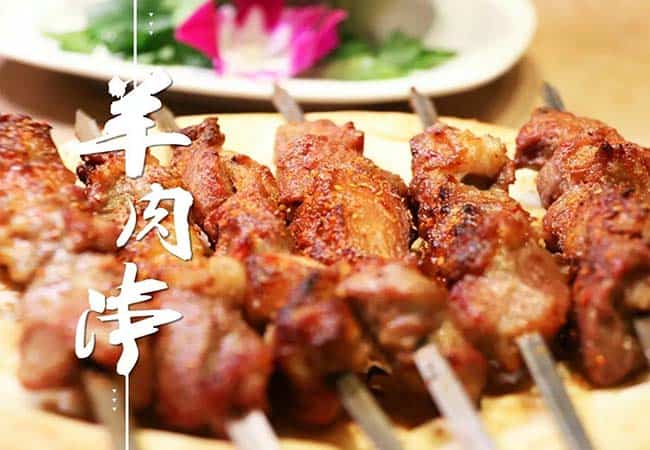
13. Muztag Peak
People call “Muztag” the “Father of the Iceberg”. It is currently the only snow mountain that can provide mature commercial climbing services, and it is also the most well-known one of the “Kunlun Three Heroes”. What leads you to the foot of it is the China-Pakistan Friendship Highway, known as the “eighth miracle of the world”.
In southern Xinjiang, which is known for its ethnic customs, it is also a three-dimensional landscape avenue across the Pamirs. At the foot of icebergs, lakes and grassland stretches everywhere, the Taheman Wetland is surrounded by mountains, and there are wild flowers, cattle and sheep everywhere in summer. If you are physically strong enough, you can also complete a hike from Karakule Lake to Muztag Base Camp in the Pamirs.
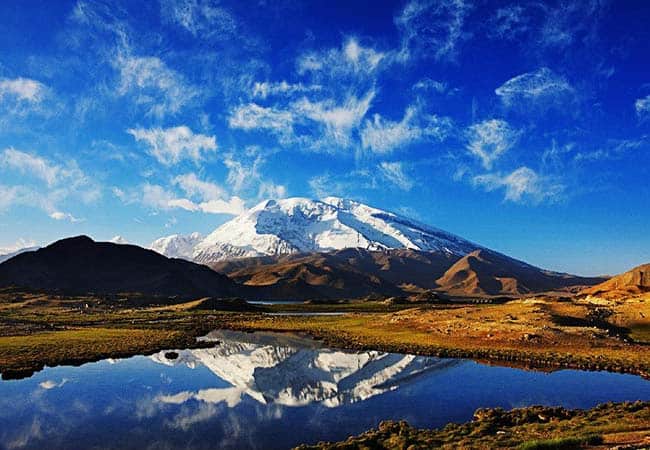
14. Sayram Lake
Sayram Lake is an exception in Xinjiang and even Central Asia. Unlike the lakes that are deep in the lowlands and deserts, it has an amazing clear blue at an altitude of more than 2,000 meters. It is surrounded by perfect forests and grasslands. It has always been the most cherished summer home of Kazakhs and Mongolians. You can drive or ride a bicycle around Sayram Lake, but it is best to rest on the Xihai grassland for a night. After greeting the swans by the lake at sunrise, ride a horse to the flower-filled forest, the cliff, the green hills and valleys on the south side, and the blue water and sky in the north will surprise you at the same time.
√Recommended tour: 8 Days Southern Xinjiang Tour with Sayram Lake

15. Feast Your Stomach with Sweet Fruits
The Silk Road not only brought the integration of economy and culture, but also brought melons and fruits from the Central Plains and the West, which became more fragrant under the warm sunshine of Xinjiang. The white pear and pink peach in the north and south of Tianshan and the passionate Maixilaifu under the grape rack are just sweet overtures.
The festival named after various melons and fruits is the highlight of the year, from Eastern Xinjiang to Southern Xinjiang, from March to November, Korla fragrant pears, Kuqa small white apricots, Shihezi flat peaches, Aksu rock sugar heart apples, Turpan grapes, Lukeqin melons, and Hami dates mature in succession. The next step is to enjoy the feast of melons and fruits and meet all your imagination about sweet fruit.

16. Join the Golden Autumn Populus Carnival
This seems to be a golden assembly order issued by the land of the Western Regions. It only takes a few sunny days in autumn and the populus euphratica forests that grow arbitrarily on both sides of the Tarim River ushered in the annual carnival. They swayed gorgeously between the blue sky and yellow sand. In Mu Lei, Populus euphratica of various shapes are waiting for you to go on an autumn date; in Yiwu Naomao Lake, the ancient Populus euphratica forest shows people ten thousand years of tenacious vitality. This is also a festival for photographers who come from all over the world to participate this glorious visual feast.
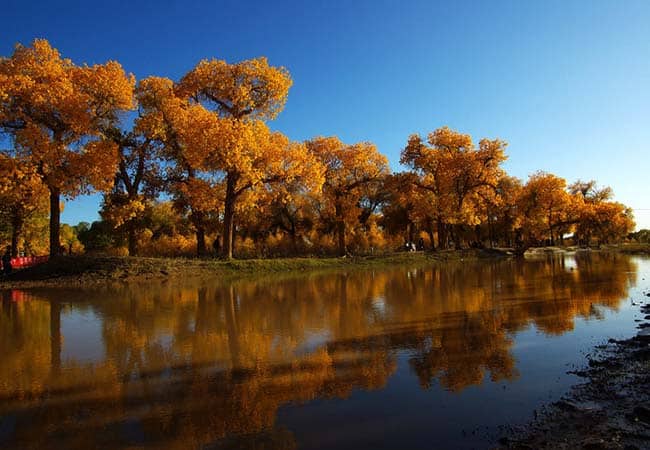
17. Colorful City
There is no final conclusion about the formation of Wucai City. Many people believe that this miraculous landform is a miracle created by meteorites outside the sky. This colorful hill suddenly rises in the yellow sandy Gurbantunggut Desert, or towering or low, with red, yellow, gray, white and brown layered and mixed, forming a colorful dream. What you see on the viewing platform at sunset will surprise you. The sun shines on different places in Wucai City, gradually showing a splendid scene from golden to crimson. Even if you are a new photographer, you can still take an amazing picture at this moment.
